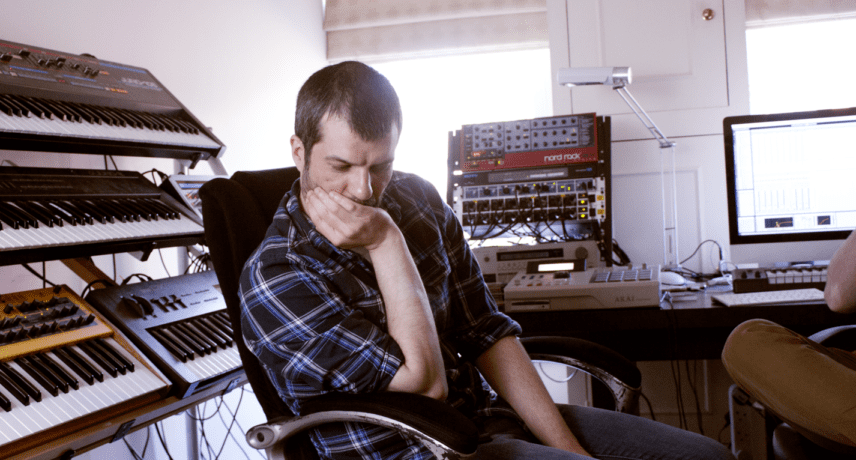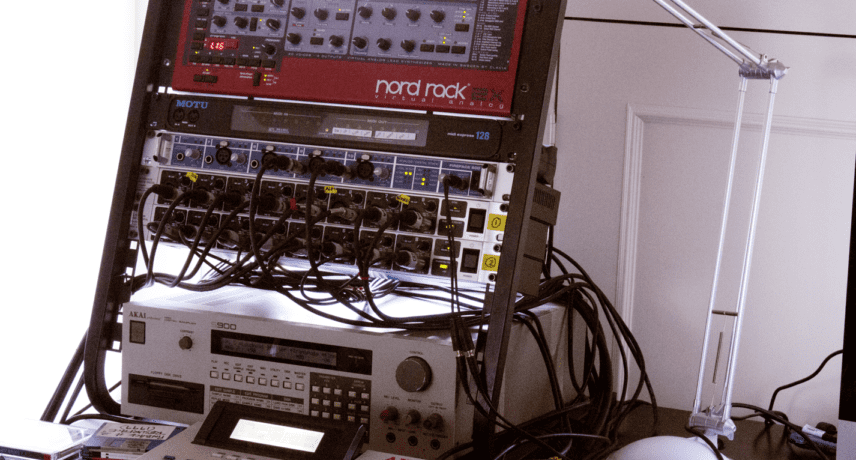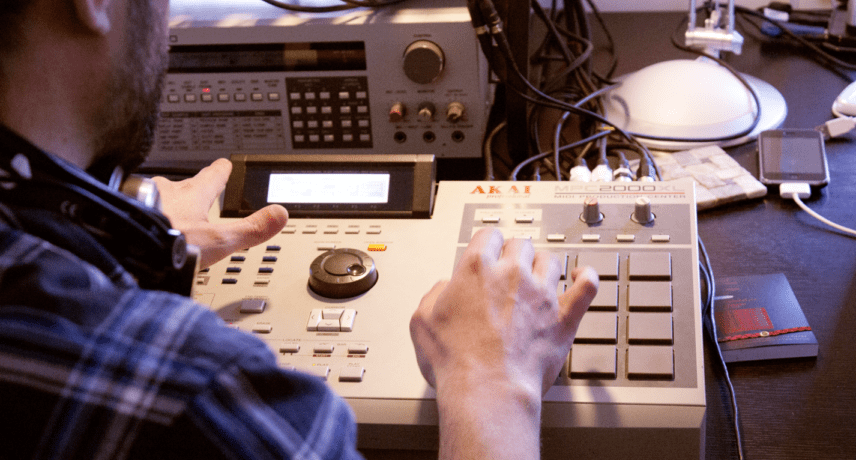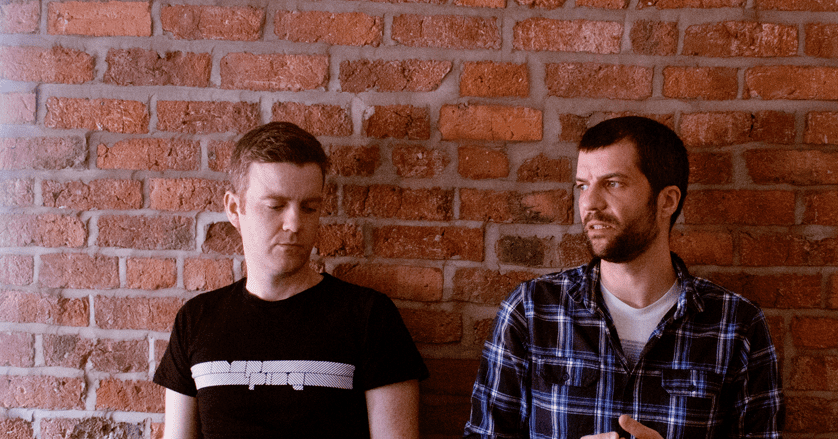Attack joins the Boys Noize Records duo in the studio to discuss production techniques, influences and gear.

Shadow Dancer’s Studio
The duo primarily work in Al’s home studio. The main DAW is Ableton Live, although Logic is also used occasionally.



Nord Rack 2X
The Nord Rack 2X is another staple of Shadow Dancer’s productions. “We use it on every track,” says Paul.



Akai MPC2000XL
The MPC is a relatively recent addition to the studio, mainly joining the Akai S900 for drum duties.
Paul, you live about an hour and a half away in north Wales. How does the distance between your houses and studios affect the way you make music together? Do you collaborate over email or just try and get together in person?
Paul: Collaborating remotely doesn’t really work for us. We try and get together and work with each other in person.
How does the process work when you get in the studio? You’ve mentioned in the past that it’s mainly about just throwing around ideas until something sticks.
Al: We’ve had a really productive period recently. A lot of our new tracks have been born out of buying new synths, finding out what sounds they can make and letting that lead the way the track sounds, rather than trying to make a track in a particular way.
Paul: Sometimes it’s nice to have a new piece of gear to fire up creativity. It’s the most expensive way of making a track, though.
So you don’t really know how the track’s going to sound until you start making it?
Al: No, even the bpm’s up for grabs. We could start off at 125 and say no, this sounds shit, and it ends up at 118.


Paul: It’s a strange one to get round, because you do get people who say, ‘You have to do it this way.’ My way of thinking is that if people had said, ‘You can’t do it that way’ in the late 80s in Detroit then they wouldn’t have made techno. ‘You can’t use a 909 to do that… A 303’s supposed to sound like a bass guitar…’ If you don’t try things that aren’t meant to be done, everyone’s going to sound the same. It’s missing the point.
Nobody’s ever heard a track in a club and said, ‘It sounds like they’ve used that compressor incorrectly…’
Paul: Yeah, the end user’s not concerned with how it’s made. I was reading a discussion on Gearslutz the other day about classic house and techno, asking why it’s all so badly produced. They were saying that you couldn’t get away with that in any other form of music. It’s not really about how it’s produced…
A lot of the great acid house tracks are recorded to tape and you can hear where it’s chewed up. On ‘Land of Confusion’ by Armando you can hear where the 303 goes out of sync with the 707 and he’s obviously having to restart it at some points. It’s similar on the AFX ‘Analord’ series. There are tracks where he’ll start them and then clearly just stop the sequencer and start it again. A lot of people would say you can’t do that.
Al: I used to collect loads of live bootlegs of techno acts and that’s when you hear the tracks produced at their worst. I used to listen to a lot of them more than the studio versions. They still had their own exciting sound, I suppose.
Really raw.
Paul: Yeah, but it works because it’s so stripped back. I was reading about how ‘Strings of Life’ was produced – just a Mirage, a 909 and I think a 727. You’d probably only have one rackmount effects unit so you didn’t have effects on every channel, you didn’t have a compressor on every channel and it was just recorded straight to tape.
So much of the Detroit stuff was made with minimal equipment, shared between a few people.
Yeah, I think the Mirage belonged to Kevin Saunderson and Carl Craig used it as well.
Have you always preferred working with hardware rather than in the box?


Al: We used to hate it when mates could recognise sounds we’d sampled. What was it we got clocked on?
Paul: Our uncle always used to spot Jean-Michel Jarre samples.
Al: Oh yeah, and Vangelis.
Paul: We sampled a CS-80 sound from the Blade Runner soundtrack. You’re always going to get caught out on that one…
Having been involved in dance music since the 90s, how much have things evolved? Do you think the club scene’s changed dramatically since then?
Paul: Yeah, definitely. I think it’s got a lot to do with the way drugs have changed in the scene, moving away from MDMA towards cocaine, ketamine and alcohol. It creates more tension and more of a tendency towards violence. I think MDMA allowed people more time to get lost in the music, which is where those hands-in-the-air moments come from. I’m not somebody who takes drugs but it’s not like I don’t understand that MDMA is completely essential to electronic music. I actually don’t think I’d even go clubbing these days if I wasn’t playing.
Do you think the focal point has also changed with the rise of the superstar DJ?
Paul: It used to be that you’d go to a club and dance with your mates but now everyone faces the DJ, as if he’s going to do something spectacular rather than just put another record on.
Al: It is slightly depressing when electronic artists dress up like children’s entertainers and suddenly get really big. It does make you think, ‘Have we missed a trick there?’
Paul: It was a good move for people like Daft Punk, but I remember when we used to go and see Aphex Twin in the 90s and his stage show was just him lying on a mattress on the stage with a laptop.
Al: But even he had those giant teddy bears…
A compilation of Shadow Dancer’s archive material from 1997-2002 will be released on Bad Life in the autumn. The duo are currently working on a new album for Boys Noize Records, which will be released in 2013.
Photographs by Nicola Rowlands.

09.07 AM
Inspiring! especially the part where the speak about the old classics and the minimal gear that was used to produce them. The new producers should learn something about that. Keep it RAW!
10.12 PM
Great interview, guys have a big knowledge about techno music and it’s always a joy to read what they say. I love their music and can’t wait for the autumn compilation on Bad Life.
12.23 AM
Anyone know which audio interfaces are beneath the RME FF800?
02.57 PM
As far as we recall those are Behringer ADA8000s.
http://www.behringer.com/EN/Products/ADA8000.aspx
07.25 PM
Thank you! Much appreciated.